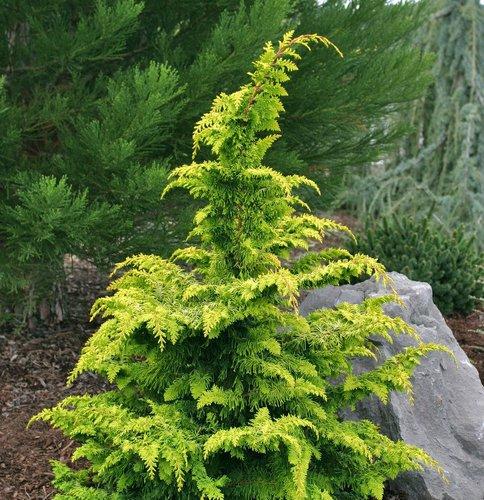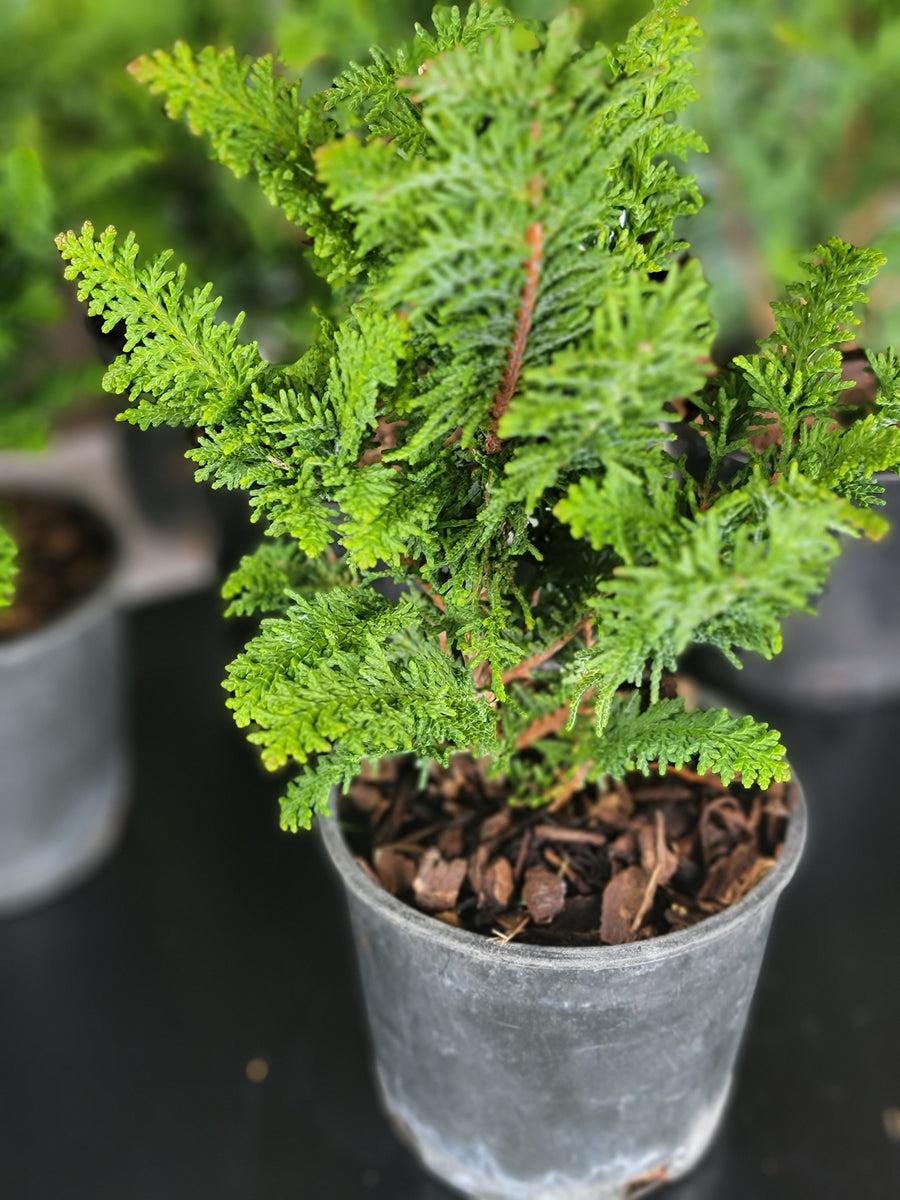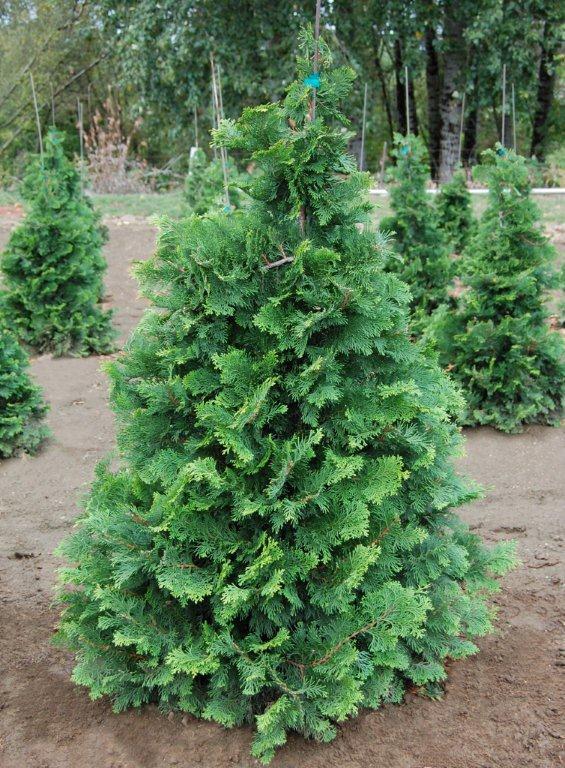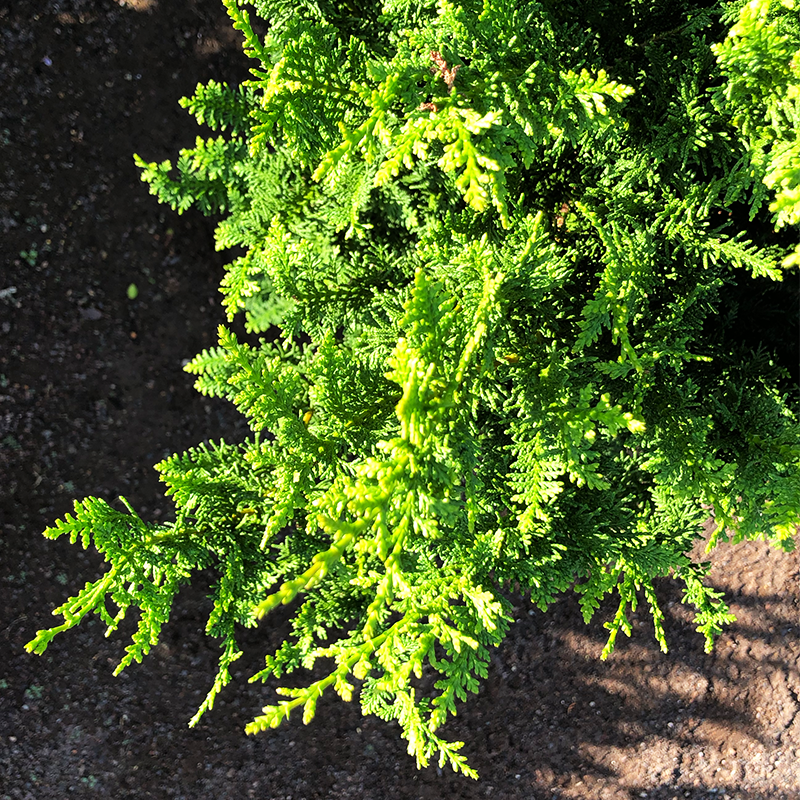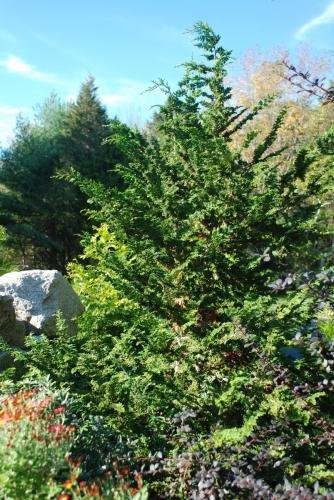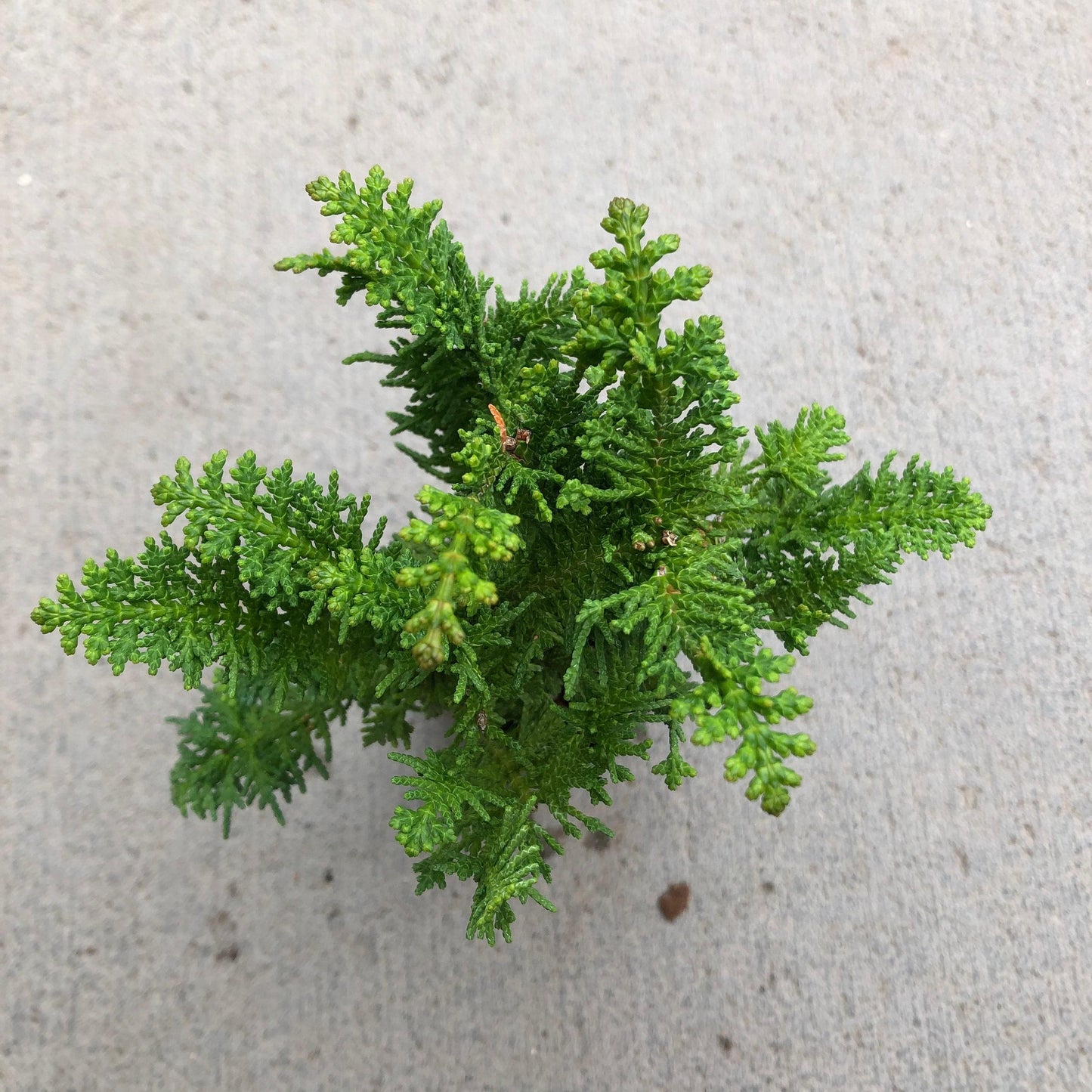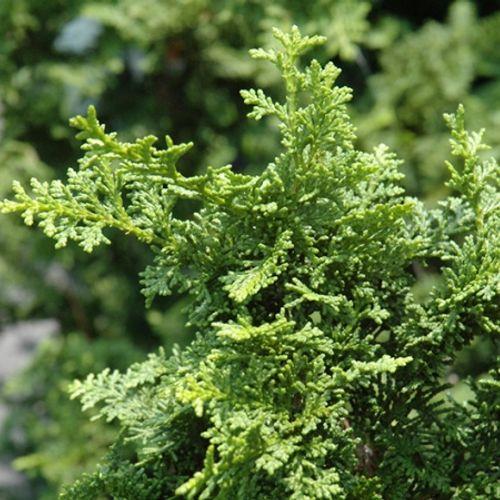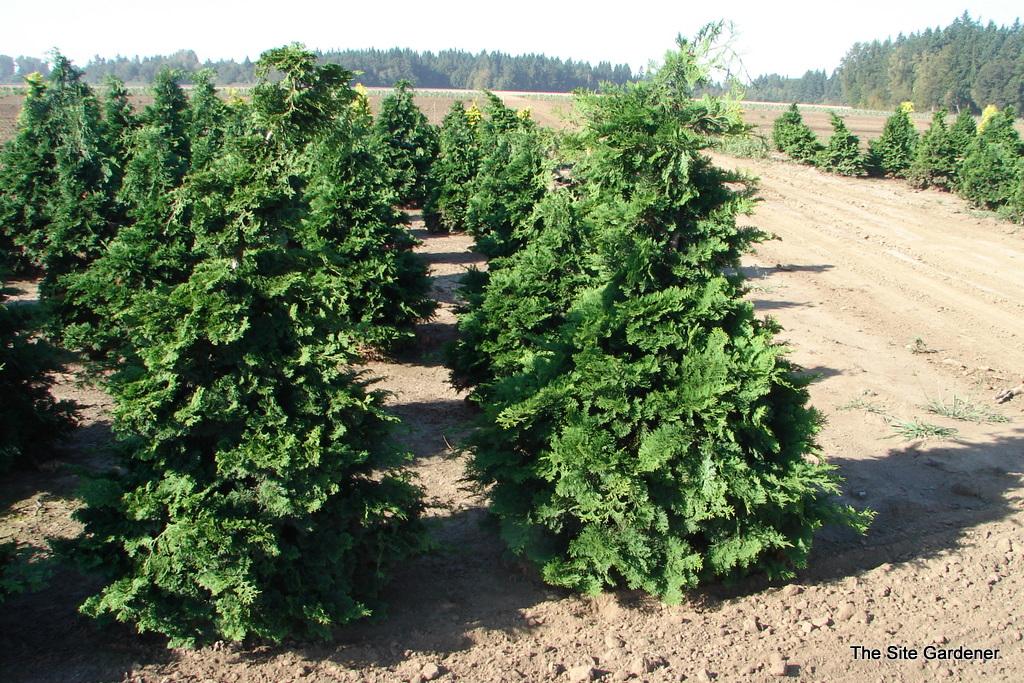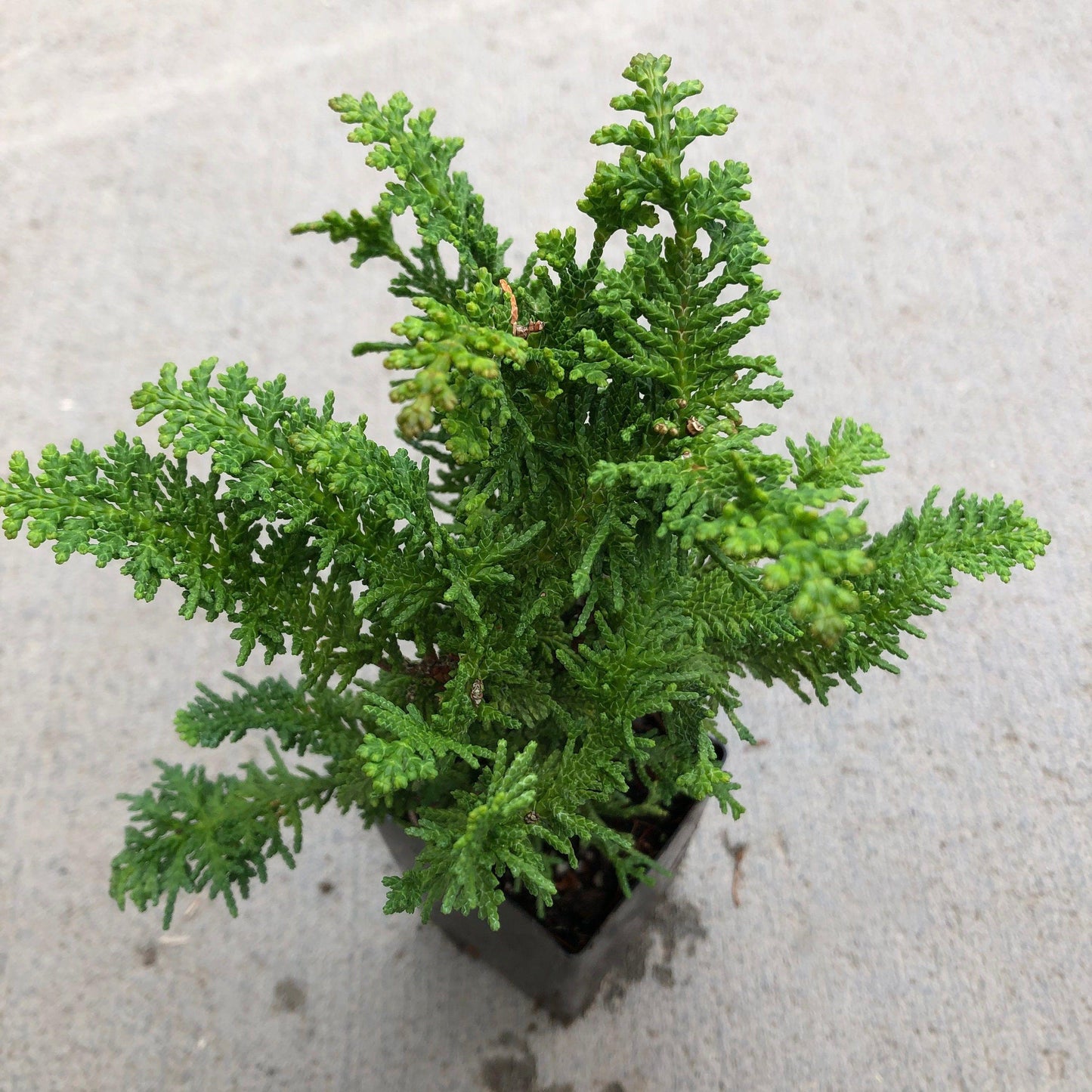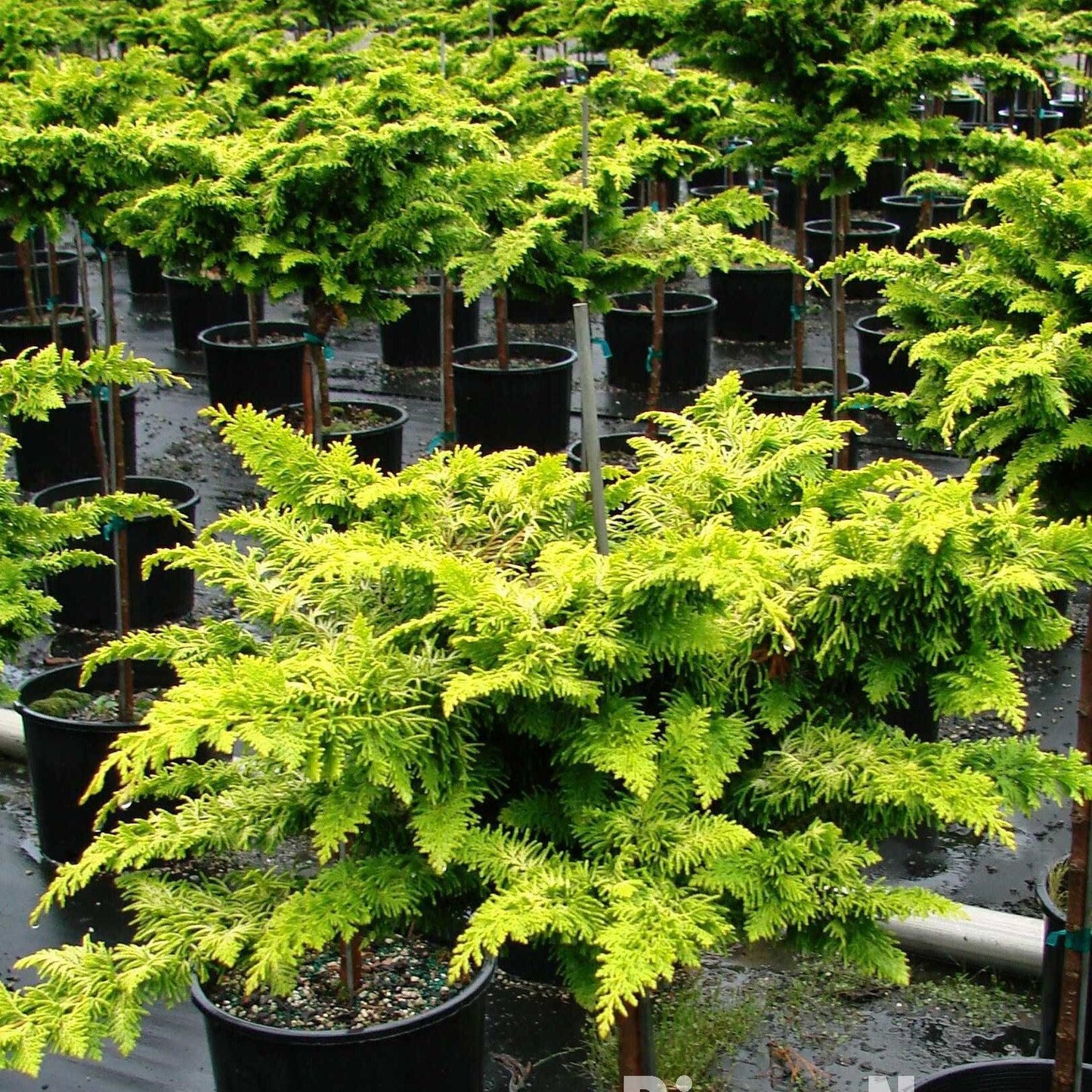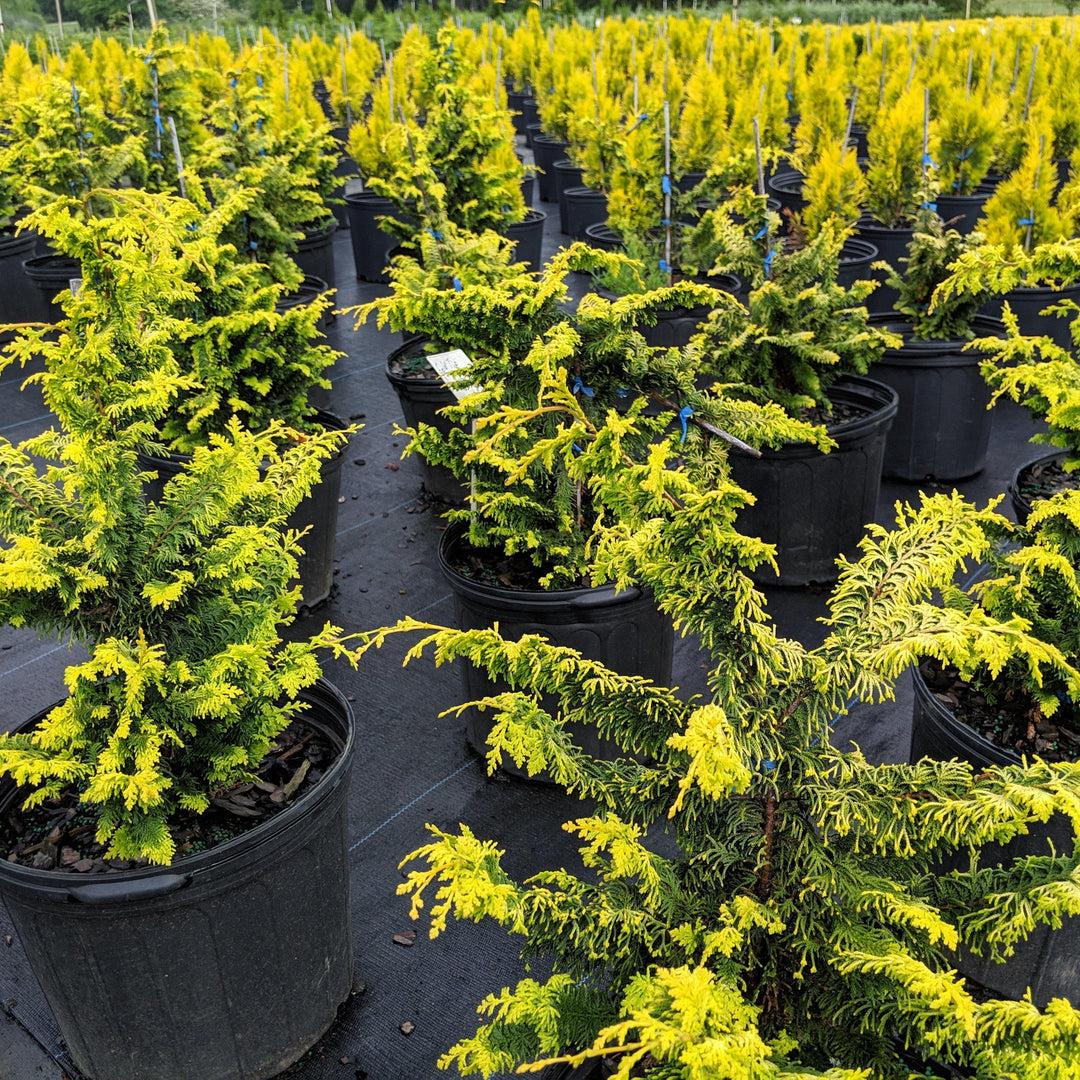1
/
of
19
Fernspray Hinoki Falsecypress–Unique Evergreen–Textured Foliage 3 Gallon
Fernspray Hinoki Falsecypress–Unique Evergreen–Textured Foliage 3 Gallon
Regular price
$140.00 USD
Regular price
$182.00 USD
Sale price
$140.00 USD
Unit price
/
per
Shipping calculated at checkout.
SKU:nse6695-redcrocus
Couldn't load pickup availability
Chamaecyparis obtusa 'Filicoides'
Description
The Chamaecyparis obtusa 'Filicoides', commonly known as the Fernspray Hinoki Falsecypress, is a unique evergreen conifer with a distinctive fern-like appearance. Its graceful, arching branches and rich green foliage make it an excellent choice for adding texture and visual interest to gardens and landscapes.
Suggested Uses
This plant is ideal for use as a focal point in garden beds, rock gardens, or as a specimen plant. It can also be grown in containers for patios or small spaces, and its unique form makes it a popular choice for bonsai enthusiasts.
Plant Details
-
 Botanical Name: Chamaecyparis obtusa 'Filicoides'
Botanical Name: Chamaecyparis obtusa 'Filicoides' -
 Common Name: Fernspray Hinoki Falsecypress
Common Name: Fernspray Hinoki Falsecypress -
 Size & Growth: Typically grows 6-10 feet tall and 3-5 feet wide
Size & Growth: Typically grows 6-10 feet tall and 3-5 feet wide -
 Hardiness Zones: 4-8
Hardiness Zones: 4-8 -
 Foliage Type: Evergreen
Foliage Type: Evergreen -
 Bloom Time: Non-flowering
Bloom Time: Non-flowering -
 Growth Rate: Slow
Growth Rate: Slow -
 Light Requirements: Full sun to partial shade
Light Requirements: Full sun to partial shade -
 Attracts Pollinators: No
Attracts Pollinators: No -
 Indoor Friendly: No
Indoor Friendly: No -
 Container Friendly: Yes
Container Friendly: Yes -
 Deer Resistant: Yes
Deer Resistant: Yes -
 Pet Warning: Non-toxic
Pet Warning: Non-toxic -
 Fragrant: No
Fragrant: No -
 Cut Flower: No
Cut Flower: No -
 Grows Well With: Japanese Maples, Azaleas
Grows Well With: Japanese Maples, Azaleas
Care Tips
-
 Planting Instructions: Plant in well-drained soil, ensuring the root ball is level with the soil surface.
Planting Instructions: Plant in well-drained soil, ensuring the root ball is level with the soil surface. -
 Soil Moisture: Keep soil consistently moist but not waterlogged.
Soil Moisture: Keep soil consistently moist but not waterlogged. -
 Soil Type: Prefers acidic, loamy soil.
Soil Type: Prefers acidic, loamy soil. -
 Humidity: Thrives in moderate humidity levels.
Humidity: Thrives in moderate humidity levels. -
 Pruning Instructions: Prune lightly to maintain shape, preferably in late winter or early spring.
Pruning Instructions: Prune lightly to maintain shape, preferably in late winter or early spring. -
 Winter Care: Mulch around the base to protect roots in colder climates.
Winter Care: Mulch around the base to protect roots in colder climates. -
 Planting Depth: Plant at the same depth as in the nursery container.
Planting Depth: Plant at the same depth as in the nursery container. -
 Fertilization: Fertilize in early spring with a balanced, slow-release fertilizer.
Fertilization: Fertilize in early spring with a balanced, slow-release fertilizer. -
 Special Care: Protect from harsh afternoon sun in hotter climates to prevent foliage burn.
Special Care: Protect from harsh afternoon sun in hotter climates to prevent foliage burn.
Share


